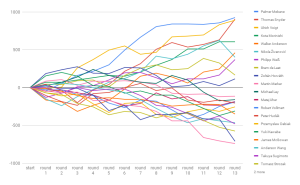I’ve polished up the mess that is puzzle-draw a bit. With the latest release, you should be able to download working binaries for Linux and Mac. More importantly, I put together an ugly but fully functional web frontend that you can use:
Depending on how well the server holds up, you can use it to edit puzzles interactively, and download the graphics in different formats.
It’s still a huge mess of various undocumented puzzle formats, but the examples should give you an idea of what’s possible. Let me know if you have problems, here or on github. In particular, I’m generally always happy to add common puzzle types, as long as someone has a need for them.







